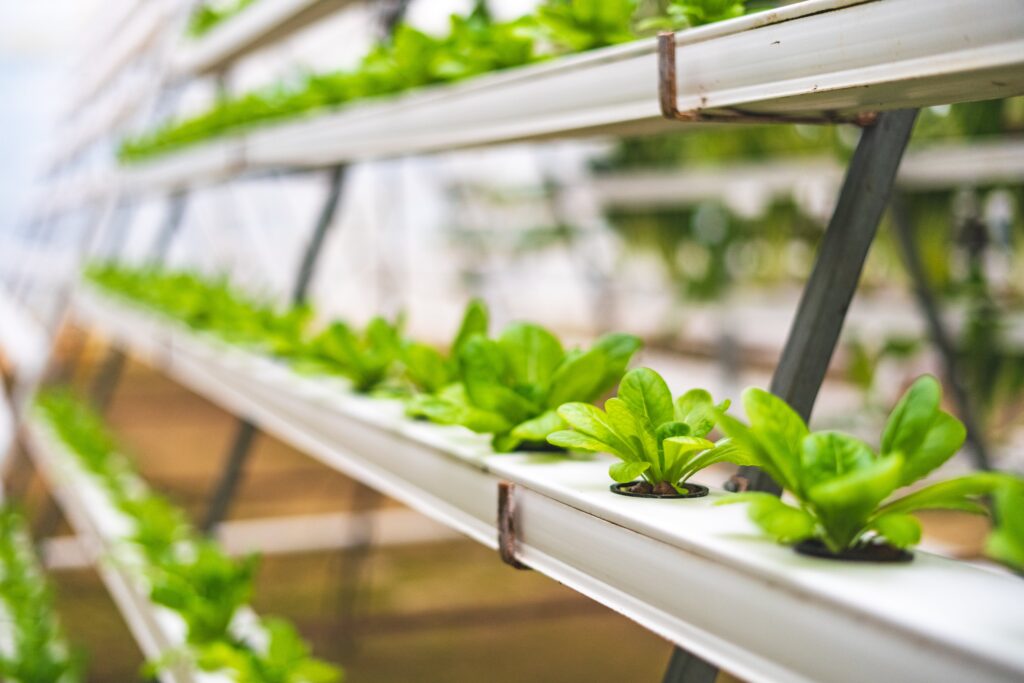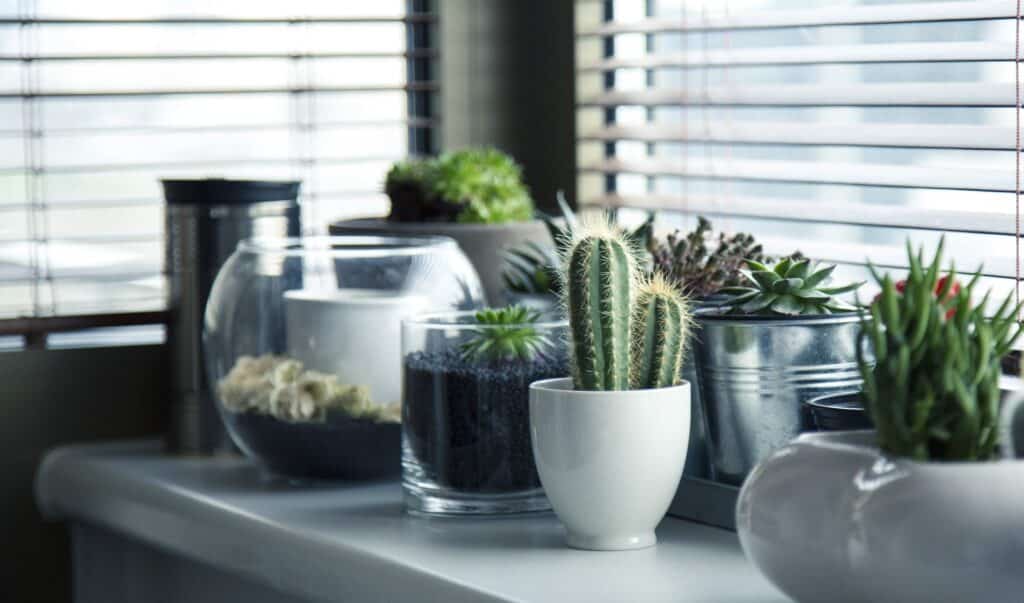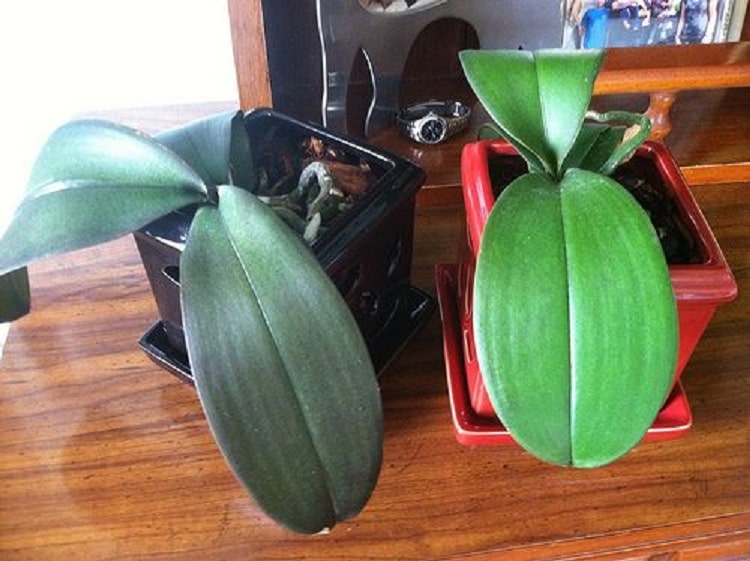If you’re noticing why indoor plant leaves curling inward and downward, it could be a sign of various issues, including stress, pests, or improper care. Learn how to identify and address this common problem to keep your indoor plants healthy.
Hey there, plant enthusiast! Have you ever noticed that the leaves of your indoor plants sometimes curl inward instead of staying open and lush? It’s a common issue that many plant owners face, and if left untreated, it can negatively impact the overall health and appearance of your precious green friends. But fret not, because in this article, we will explore some of the reasons of indoor plant leaves curling inward. So, get ready to uncover the hidden secrets and learn how to keep your plants thriving.
Pests and Diseases
Aphids
Aphids are tiny insects that can cause damage to indoor plants by feeding on their sap. These pests are typically found on the undersides of leaves and can cause leaves to curl inward. If you notice curled leaves and the presence of small, soft-bodied insects, it is likely that your plant has an aphid infestation. To control aphids, you can try spraying your plant with a mixture of water and dish soap or using insecticidal soap. Additionally, introducing natural predators like ladybugs can help keep aphid populations in check.

Spider Mites
Spider mites are another common pest that indoor plant leaves curling inward. These tiny insects are often difficult to detect, but their presence can be identified by webbing on the leaves and tiny specks that move around when disturbed. Spider mites feed on plant sap, leading to curling and yellowing leaves. To treat a spider mite infestation, you can try rinsing your plant with water or using insecticidal soap. Increasing humidity levels around the plant can also help control these pests.
Mealybugs
Mealybugs are small, white, cottony insects that can infest indoor plants. Like aphids and spider mites, they feed on the sap of plants, causing leaves to curl and distort. Mealybugs are often found in clusters along the stems and leaf axils of plants. To get rid of mealybugs, you can use a cotton swab soaked in rubbing alcohol to manually remove them from the plant. Alternatively, you can apply insecticidal soap to control their population.
Fungal Diseases
Fungal diseases can also be a cause of inward curling leaves in indoor plants. As the name suggests, these diseases are caused by various types of fungi that thrive in moist conditions. Common fungal diseases that can lead to leaf curling include powdery mildew and leaf spot. To prevent and treat fungal diseases, it is important to ensure proper air circulation around your plants and avoid overwatering. If your plant is already affected, you can apply a fungicide specifically formulated for indoor plants.
Viral Infections
Viral infections are less common but can still cause leaves to curl inward. Viruses can be transmitted through contaminated gardening tools or by insects that feed on infected plants. Once a plant is infected, there is no cure, and it may exhibit symptoms such as curling leaves, yellowing, and stunted growth. To prevent viral infections, it is crucial to maintain good hygiene practices in your gardening routine, such as disinfecting tools and keeping infected plants away from healthy ones.
Watering Issues
Underwatering
Underwatering is a common issue that can cause indoor plant leaves to curl inward. When plants do not receive enough water, they will conserve moisture by curling their leaves. Additionally, underwatered plants may exhibit other symptoms such as wilting and dry soil. To remedy underwatering, it is important to develop a regular watering schedule and ensure that your plant receives enough water to keep the soil evenly moist.
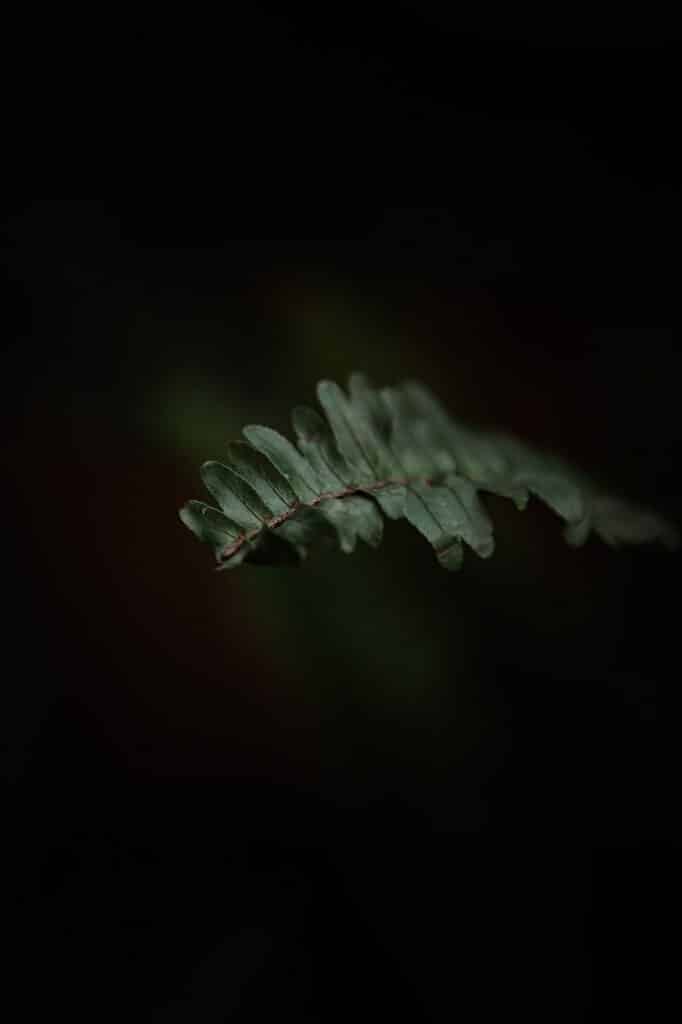
Overwatering
On the other hand, overwatering can also cause indoor plant leaves to curl inward. When plants are consistently overwatered, their roots can become damaged, leading to a lack of oxygen and nutrient uptake. Overwatered plants may have wilted leaves, yellowing, and mushy roots. To prevent overwatering, it is important to allow the soil to dry out slightly between waterings and make sure that your pot has proper drainage.
Inconsistent Watering
Inconsistent watering can also contribute to indoor plant leaves curling inward. Fluctuations in soil moisture levels can stress the plant, causing it to curl its leaves as a response. To maintain consistent watering, it is important to regularly check the moisture level of the soil and water your plant when it is slightly dry. It is also helpful to consider factors such as the plant’s specific water requirements and the humidity levels in your home.
Water Quality
Water quality can also impact the health of indoor plants and lead to leaf curling. Some tap water contains high levels of minerals or chlorine, which can be harmful to plants. If you notice leaf curling and suspect that water quality is the issue, consider using filtered or distilled water for watering your plants. You can also let tap water sit overnight to allow chlorine to dissipate before using it on your plants.
Environmental Factors
Temperature
Temperature plays a crucial role in the health of indoor plants. Extreme temperatures, whether too hot or too cold, can cause leaves to curl inward. It is important to provide your plants with the appropriate temperature range for their specific needs. Most common houseplants prefer temperatures between 65°F and 75°F during the day and slightly lower at night.
Humidity
Humidity levels can also impact the health of indoor plants. Low humidity can cause leaves to curl inward as a defense mechanism against water loss. Increasing humidity around your plants can be achieved through methods such as misting the leaves, grouping plants together, or using a humidifier. However, it is important to strike a balance, as excessive humidity can lead to the development of fungal diseases.
Air Circulation
Proper air circulation is essential for healthy indoor plants. Stagnant air can create a favorable environment for pests and diseases, leading to leaf curling and other issues. Ensure that there is adequate airflow by placing your plants in a well-ventilated area or using fans to promote air movement. However, be cautious of placing plants near drafty windows or doors, as sudden temperature fluctuations can also be detrimental.
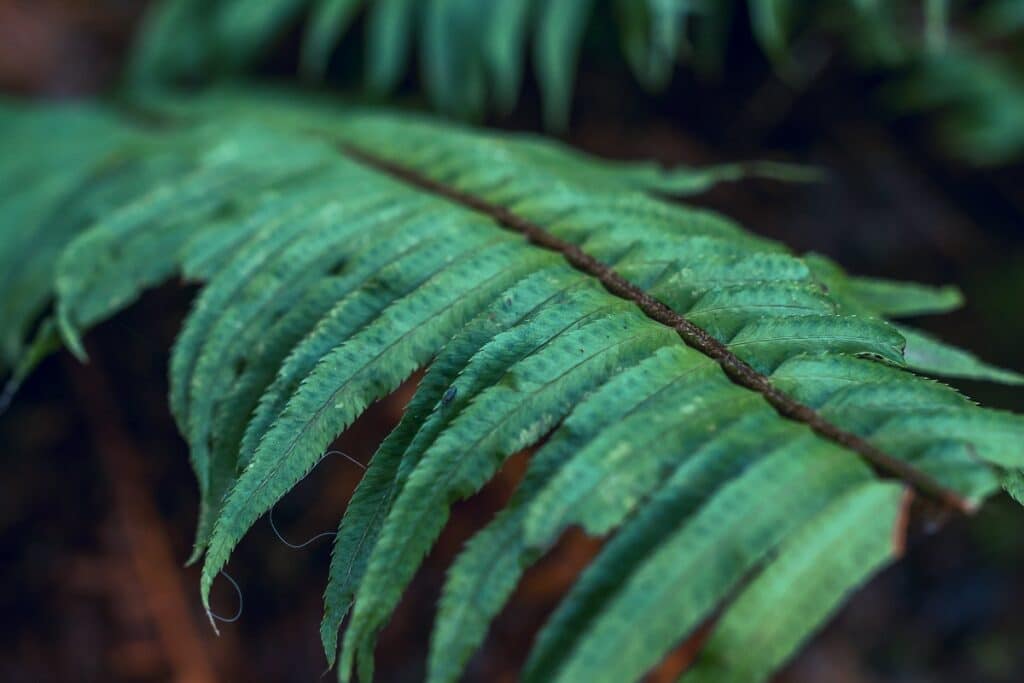
Lighting
Light intensity and duration are crucial factors for indoor plants. Insufficient light can lead to weak growth and curling leaves as the plant tries to reach for more light. On the other hand, excessive light can cause leaf burn and other damage. It is important to provide your plants with the appropriate amount of light based on their specific requirements. Most indoor plants thrive in bright, indirect light, while others may require more or less depending on their species.
Nutrient Deficiencies
Nitrogen
Nitrogen is an essential nutrient for plant growth and development. A lack of nitrogen can result in the yellowing and curling of leaves, as nitrogen plays a key role in chlorophyll production. To address a nitrogen deficiency, you can use a balanced fertilizer that provides a sufficient amount of nitrogen. Organic options such as compost or worm castings can also help replenish nitrogen levels in the soil.
Phosphorus
Phosphorus is important for root development and overall plant health. A phosphorus deficiency can lead to stunted growth, weak stems, and curling leaves. To increase phosphorus levels in the soil, you can use a fertilizer specifically formulated for promoting root growth. Bone meal and rock phosphate are natural sources of phosphorus that can be beneficial for plants.
Potassium
Potassium is essential for various physiological processes in plants, including water regulation and disease resistance. A potassium deficiency can cause indoor plant leaves curling inward, develop brown spots, and exhibit overall poor growth. To address a potassium deficiency, you can use a fertilizer with a higher potassium content. Adding compost or organic matter to the soil can also help increase potassium levels.
Magnesium
Magnesium is a crucial nutrient for chlorophyll synthesis. A deficiency in magnesium can lead to chlorosis, where leaves turn yellow while the veins remain green. This condition can cause leaves to curl inward. Addressing a magnesium deficiency can be done by using a fertilizer that contains magnesium or by applying Epsom salt, which is a magnesium sulfate compound, to the soil.

Iron
Iron is necessary for the formation of chlorophyll, and an iron deficiency can result in chlorosis and leaf curling. To treat an iron deficiency, you can use a chelated iron fertilizer or apply iron sulfate to the soil. Additionally, lowering the soil pH by incorporating acidic amendments such as sphagnum peat moss can help improve iron availability to plants.
Root Problems
Root Rot
It is a common issue that can lead to indoor plant leaves curling inward. It is caused by overwatering, poor drainage, or the presence of fungal pathogens in the soil. Root rot can cause roots to become mushy and discolored, leading to a lack of nutrient uptake and subsequent leaf curling. To address root rot, it is crucial to improve drainage by using well-draining soil and pots with drainage holes. If the roots are severely affected, it may be necessary to repot the plant into fresh soil.
Root Bound
When a plant becomes root-bound, its roots outgrow the container they are in and become densely packed. This can restrict water and nutrient uptake, leading to leaf curling and other growth issues. To address a root-bound plant, you can gently loosen the roots and repot the plant into a larger container. It is important to use a well-draining soil mix during repotting to prevent waterlogged conditions.
Overcrowded Roots
Overcrowded roots can also create stress on indoor plants, causing leaf curling. When multiple plants are growing in the same container, their roots can become tangled and compete for resources. This overcrowding can hinder proper nutrient absorption and result in curled leaves. To solve this issue, it is important to separate overcrowded plants and repot them into individual containers to allow for healthy root development.
Root Damage
Physical damage to roots, such as during transplanting or excessive handling, can lead to leaf curling. Damaged roots are less efficient in absorbing water and nutrients, which can cause stress on the plant. When handling plants, it is important to be gentle and avoid damaging the roots. If damage does occur, providing proper care, such as maintaining consistent watering and avoiding overfertilization, can help minimize the negative impact on the plant’s health.
Improper Pruning
Inadequate Pruning
Inadequate pruning can lead to an accumulation of weak or diseased plant material, which can contribute to leaf curling. Without proper pruning, plants may experience reduced air circulation and light penetration, which can encourage the development of pests and diseases. Regular pruning is essential to remove dead or diseased leaves, promote healthy growth, and prevent leaf curling. When pruning, be sure to use clean and sharp tools to avoid the transmission of diseases.
Excessive Pruning
While inadequate pruning can be detrimental, excessive pruning can also cause leaf curling. Removing too much foliage can disrupt the plant’s ability to photosynthesize effectively, leading to stress and curled leaves. It is important to strike a balance when pruning, removing only what is necessary for plant health and aesthetics. Consider the specific pruning requirements of each plant species to avoid over-pruning.
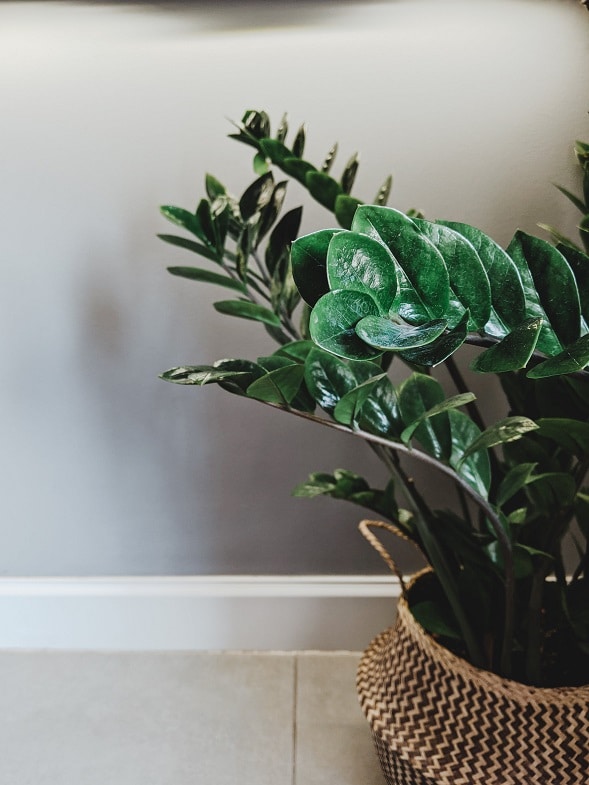
Incorrect Pruning Techniques
Using incorrect pruning techniques can also result in leaf curling. Improper cuts can create wounds that are susceptible to infection, leading to the spread of diseases. When pruning, it is important to make clean cuts just above a leaf node or bud, using sharp and sterilized tools. Research the proper pruning techniques for each specific plant variety to ensure successful and healthy pruning.
Chemical Exposure
Excessive Fertilizer
Overapplication of fertilizers can cause chemical burn and leaf curling in indoor plants. When plants receive an excessive amount of nutrients, their roots can become overwhelmed, leading to stress and curled leaves. It is important to follow the recommended dosage and frequency provided by the fertilizer manufacturer. Consider using slow-release fertilizers or organic alternatives to ensure a slow and steady nutrient release.
Toxic Substances
Exposure to toxic substances can also lead to indoor plant leaves curling inward. Household chemicals, such as cleaning products or aerosol sprays, can release harmful fumes that can negatively affect plant health. It is important to keep indoor plants away from areas with high chemical exposure and ensure good ventilation in your home. If you suspect chemical exposure as the cause of leaf curling, consider relocating your plants or providing proper protection.
Pesticide Contamination
Applying pesticides without proper precautions can also result in leaf curling. Inappropriate pesticide use, such as applying during sensitive growth stages or using higher concentrations than recommended, can cause leaf burn and curling. When dealing with pests, it is important to choose the least toxic and targeted pesticide option. Always follow the instructions provided by the pesticide manufacturer and use protective measures to prevent contamination.
Genetic Factors
Species Predisposition
Some plant species are naturally more prone to leaf curling than others. Genetic factors can make certain plants more susceptible to curling leaves, regardless of environmental conditions or care practices. If your indoor plant consistently exhibits curled leaves despite optimal care, it may be due to species predisposition. In such cases, it is important to research the specific needs and characteristics of your plant species to provide the best care possible.

Variety-Specific Traits
Even within the same species, different plant varieties can exhibit distinct traits, including leaf curling tendencies. Some plant varieties may naturally have curled leaves as part of their genetic makeup. If you have a particular plant variety with curled leaves, it is important to understand and appreciate its unique characteristics. Ensuring proper care, including appropriate watering, lighting, and fertilization, will help maintain the health and beauty of these specific varieties.
Stress and Shock
Transplant Shock
Transplant shock occurs when a plant is moved from one container or location to another. It can cause indoor plant leaves curling inward as the plant adjusts to its new environment. Transplant shock can be minimized by carefully handling the plant, avoiding damage to the roots, and providing proper post-transplant care. It is important to keep the newly transplanted plant in a stable environment with consistent light, temperature, and watering until it has fully recovered.
Environmental Changes
Sudden changes in environmental conditions, such as temperature, humidity, or light levels, can cause stress to indoor plants. This stress can manifest as leaf curling, along with other symptoms. To minimize stress from environmental changes, it is important to gradually acclimate your plants to new conditions. Gradual adjustments allow plants to adapt and minimize the risk of leaf curling and other stress-related issues.
Physical Damage
Physical damage to plants, such as accidentally bumping or breaking branches or leaves, can cause stress that leads to leaf curling. Plants respond to physical damage by curling their leaves as a defense mechanism. It is important to handle plants with care and avoid causing unnecessary damage. If physical damage does occur, providing proper care, such as maintaining optimal growing conditions and avoiding additional stressors, can help the plant recover.
Overcrowding
Overcrowding plants in a limited space can cause stress and leaf curling. When plants are too close together, they compete for light, nutrients, and space, which can result in stunted growth and curled leaves. It is important to provide adequate spacing between plants to promote healthy growth. Regularly check and rearrange your indoor plants to ensure they have enough space to thrive.
Lack of Maintenance
Dust Accumulation
Dust accumulation on indoor plant leaves can interfere with their ability to perform photosynthesis and transpiration. Over time, this can lead to nutrient deficiencies and leaf curling. Regularly dusting your plants with a soft, damp cloth or gently rinsing them under a shower can help remove dust and keep their leaves clean.

Inadequate Pruning
Inadequate pruning, as mentioned earlier, can result in the accumulation of weak or diseased plant material. This can contribute to the development of pests and diseases, ultimately leading to leaf curling. Regularly inspecting your plants and pruning as needed can help maintain their overall health and prevent leaf curling caused by poor maintenance.
Lack of Fertilizer
Indoor plants rely on regular fertilization to replenish nutrients that may be lacking in their growing medium. A lack of fertilizer can lead to nutrient deficiencies, which can manifest as curled leaves. It is important to feed your plants with a balanced fertilizer according to their specific needs. Regular fertilization, following the manufacturer’s recommendations, helps promote healthy growth and prevents nutrient deficiencies.
Improper Repotting
Repotting indoor plants is a necessary part of their care routine, allowing for root growth and nutrient replenishment. However, improper repotting practices can cause stress and leaf curling. When repotting, it is important to choose an appropriate pot size, use well-draining soil, and handle the plant and its roots with care. Following proper repotting techniques helps minimize stress and promotes healthy growth in your plants.
Conclusion
In conclusion, there are numerous factors that can contribute toindoor plant leaves curling inward. Pests and diseases, watering issues, environmental factors, nutrient deficiencies, root problems, improper pruning, chemical exposure, genetic factors, stress and shock, and lack of maintenance all play a role in the health of indoor plants. By identifying the specific cause of leaf curling and taking appropriate action, you can ensure that your indoor plants thrive and maintain their beautiful foliage. Remember to regularly inspect your plants, provide proper care and maintenance, and seek professional advice if needed. With attention and care, you can enjoy healthy and vibrant indoor plants year-round.


